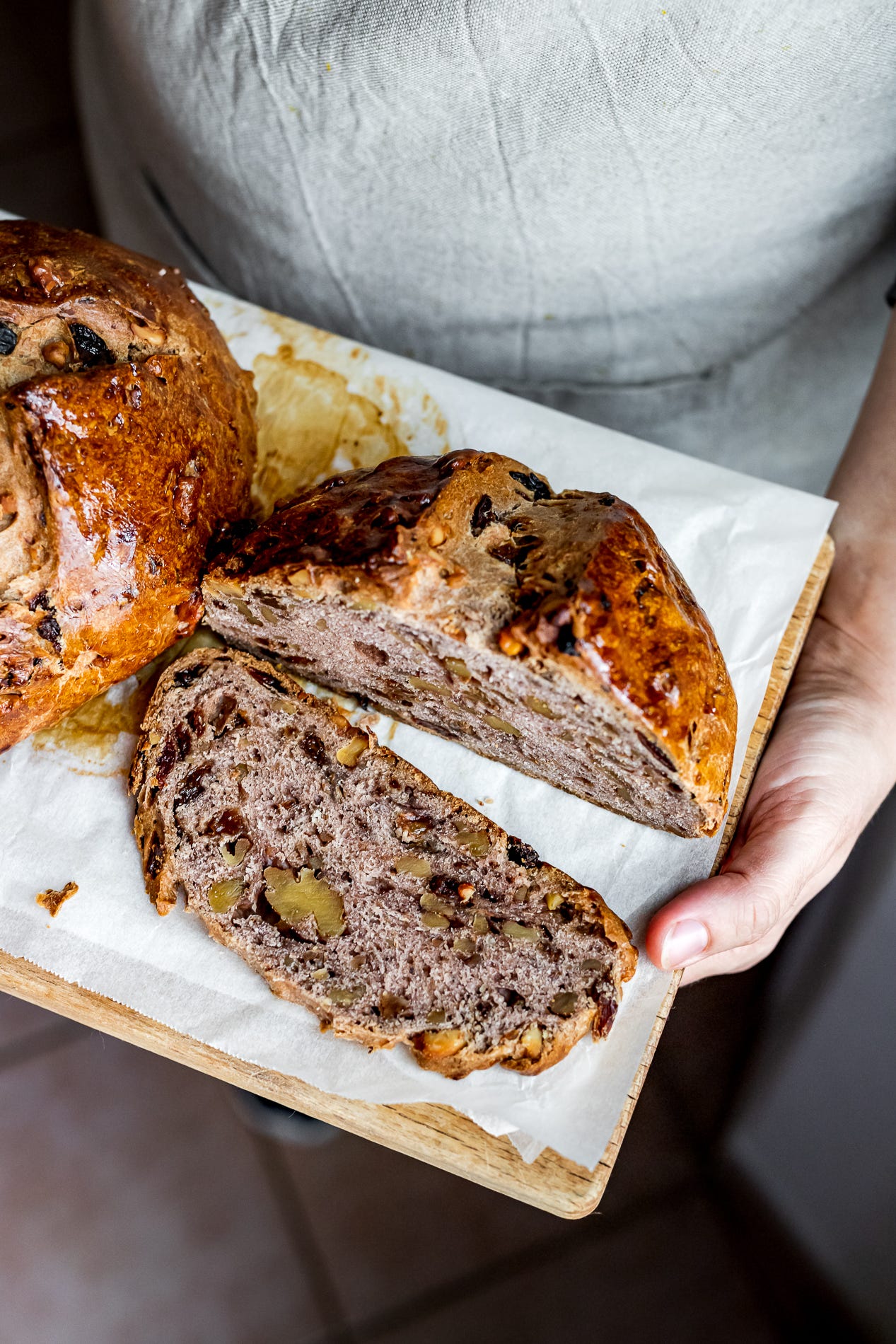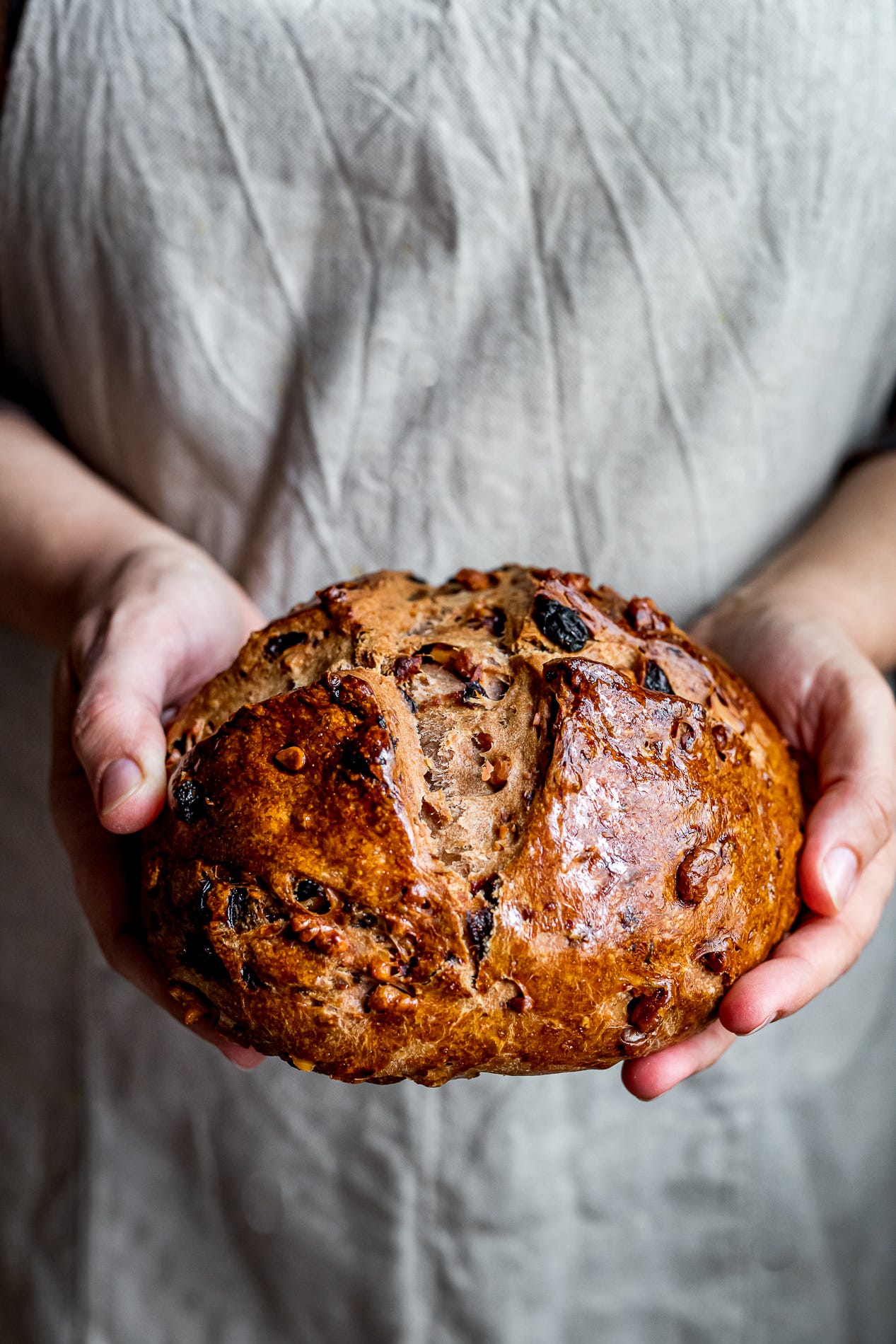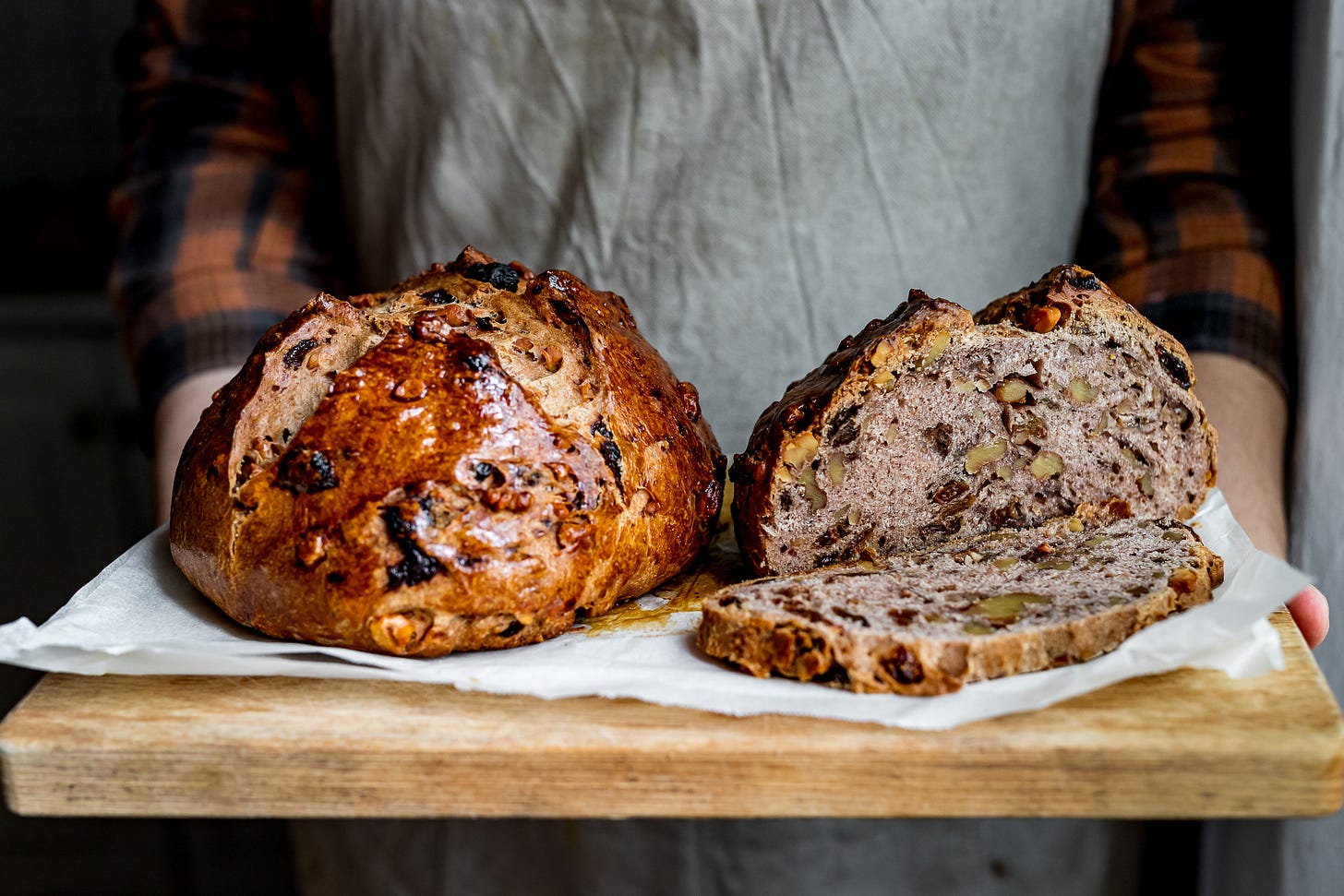Pan co’ Santi, a Tuscan walnut and raisin bread for All Saints’ Day
The spiced, dense bread loaf that ushers in the Tuscan festive season.
Today I’m sharing a post I’ve written in 2009 for pan co’ Santi, the Tuscan walnut and raisin bread we usually bake for All Saints’ Day. I updated the old recipe inspired by a new approach to baking - far less yeast and a longer raising -, I added bits of history and tradition, and Tommaso shot new photos of the pan co’ Santi I baked yesterday. The faint smell of nuts, black pepper, wine and raisins was still lingering in the air while we took these photos in the afternoon light coming from the kitchen window.
It is a completely renewed post. I’m not disowning my own recipes and my beginnings. I’m very proud of where I came from, of the path Tommaso and I have chosen to walk together, of everything we’ve learnt along the way. But I’m not the woman I was 11 years ago.
At that time, I was rediscovering my family recipes, I was attempting my first steps in the kitchen, experimenting with baking heavy, hard-as-stone bread. Now this is my bread and butter. I made those traditions mine, I grew fond of time-honoured flavours, appreciating how modern, fresh, surprising they could be. After more than 10 years, I am more confident in the kitchen, many recipes have become staples in our family, and deserve some more love, new photos, and a proper introduction.
We want to share with you recipes that work, that can become part of your culinary repertoire, to make you feel at home in a Tuscan countryside kitchen.
And now, let’s talk about pan co’ Santi.
In Siena, you can always tell the time of year based on the types of sweets available at any given moment.
In September, a few spoonfuls of sugar and grapes are added to plain bread dough to make a schiacciata traditionally associated with the harvest. Late October to mid-November, on the other hand, means the arrival of pan co’ Santi.
Pan co’ Santi is a dense, spiced Tuscan bread, studded with raisins and walnuts, enriched with red wine, extra virgin olive oil, and sugar. In the past, they would use lard rather than olive oil, and a good spoonful of honey instead of sugar. It belongs to those enriched bread loaves that would be seasonally baked with what was available in the pantry at a given moment of the year: grapes in September to celebrate the harvest, aniseeds and eggs for Easter, raisins, walnuts, and red wine, to celebrate All Saints Day.
What looks like a rather heavy and dense bread loaf is indeed what ushers in the Tuscan festive season.
Pan co’ Santi, the Tuscan walnut and raisin bread
This recipe, shared in our cookbook From the Markets of Tuscany, is the result of years of experiments, and it is adapted from the recipes I was given by Gelsomino, my mum’s cousin and a former professional chef, and by my Aunt Teresa, the best cook in my Southern family branch.
I learnt to appreciate pan co’ Santi growing up. Now I am equally fascinated by its spiced, nutty taste and the rituality of baking it to welcome a more reflective, intimate season and to start the festivities. We enjoy pan co’ Santi to end the family meal of November the 1st, then I wrap it in a paper bag for my breakfast. I cut a thick slice of pan co’ Santi in the morning and toast it on a griddle pan until the nuts start to release their oil, and the raisins caramelize. Then I slather it with butter and a tart jam, my favourite being my mum’s plum jam. This is when I can really taste the festivities approaching.
If you decide to participate in the weekend cooking project, share the results with us on social media by using the hashtag #myseasonaltable and tagging @julskitchen on Instagram.
If you have questions about the ingredients or the recipe, if you have a special request for one of the following cooking projects, or want to have a chat, reply to this email.
More recipes for All Saint’s Day
Bones of the dead. In Volterra, for some research for a cookbook, I entered one of those pastry shops with glittering windows, where you know right away, even before you set foot inside, that the atmosphere is relaxed, the choice is wide, and the welcome friendly and smiling. At the entrance, there were piles of brittle ossi di morto, the typical biscuits of Volterra, made with egg whites, sugar, flour and roasted hazelnuts, subtlety scented with lemon zest. Typical of All Saints’ and All Souls’ days, they open the holiday season. Today they can be found all year round for the happiness of those who love to dunk them in a glass of vin santo.
All Saints’ Day muffins. I did a quick dessert that is not part of our culinary tradition, muffins, but I have enriched them with walnuts, raisins, red wine, and black pepper as befits the Tuscan pan co’ Santi. With these muffins, you can appreciate an old-world taste that often takes too long to be kneaded, raised, and baked in a very short time.
In Lombardy, you can find a dark, dense bread similar to pan co’ Santi known as pan dei morti.
My friend Rossella on her blog, shares the recipe for fave dei morti, from Le Marche.
In Liguria, you can find pan dei santi e dei morti, like the one baked by my friend Enrica from A Small Kitchen in Genoa.
Are you interested in more original recipes?
So you should consider subscribing to our weekly newsletter.
What you missed recently: Crostata di frutta fresca, Caprese cake, Chestnut flour tagliatelle with porcini and sausages, Potato frittata, and Pasta, fagioli, e cozze.
If you join us, you will receive a new exclusive recipe inspired by ingredients, season, or tradition every week. You will discover Italian classics, weeknight ideas with an Italian flair, reliable dishes to add to your cooking repertoire.
Subscribing to the newsletter, you will support us directly. Whenever you decide to join us, you will have complete access to the whole archive of already published recipes and stories.
We love Letters From Tuscany as it is like having our independent publication: we test, photograph, write each recipe just for you. It is a way of sharing great content, recipes that we like, created to inspire you, to bring a little taste of Italy to your kitchen, for you and your family.







